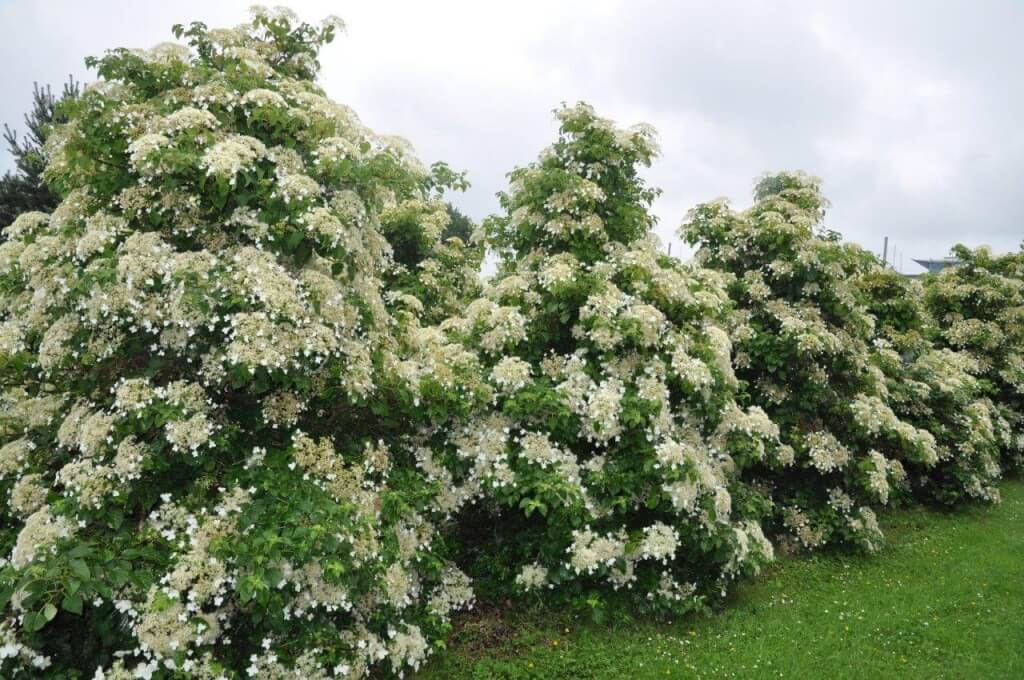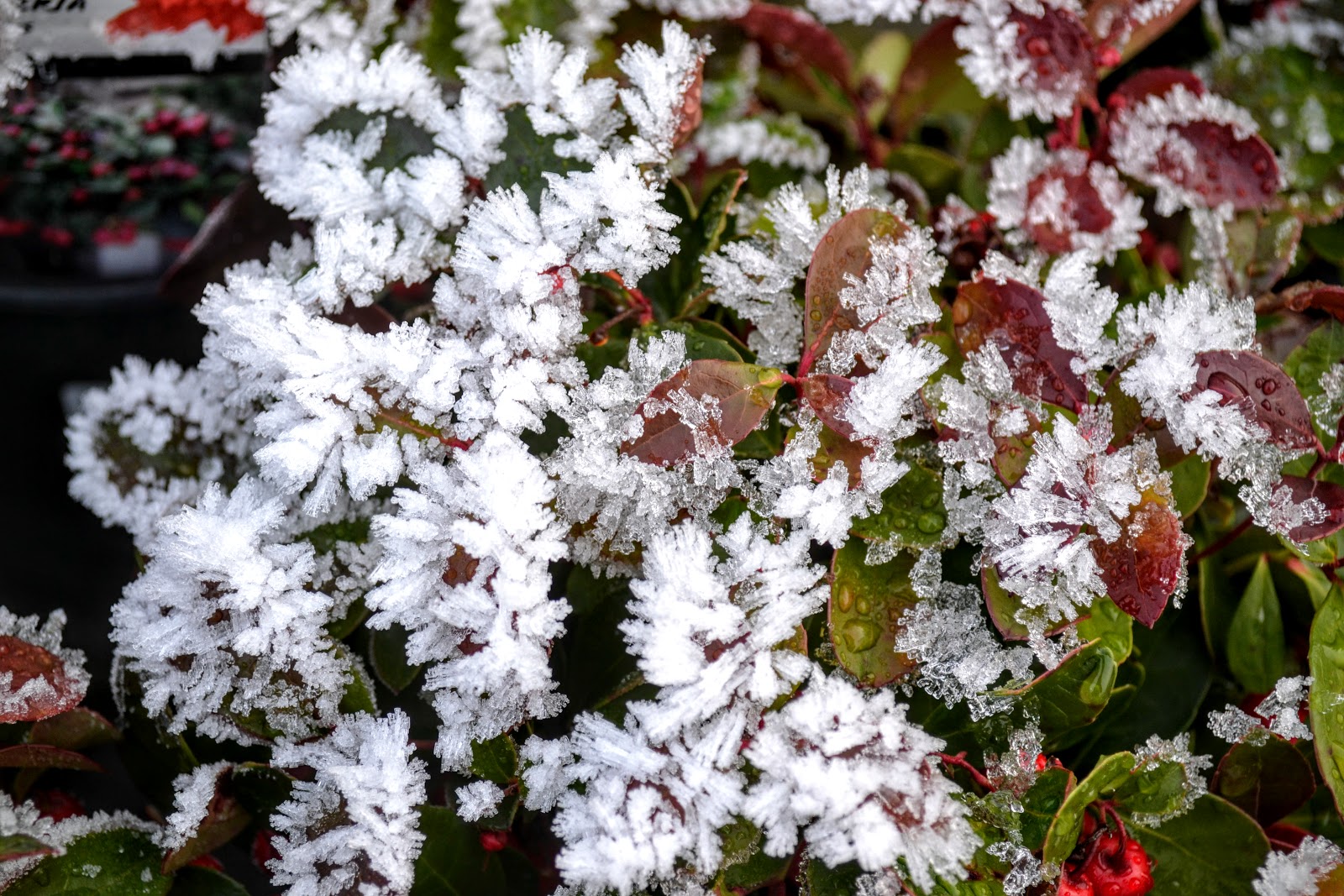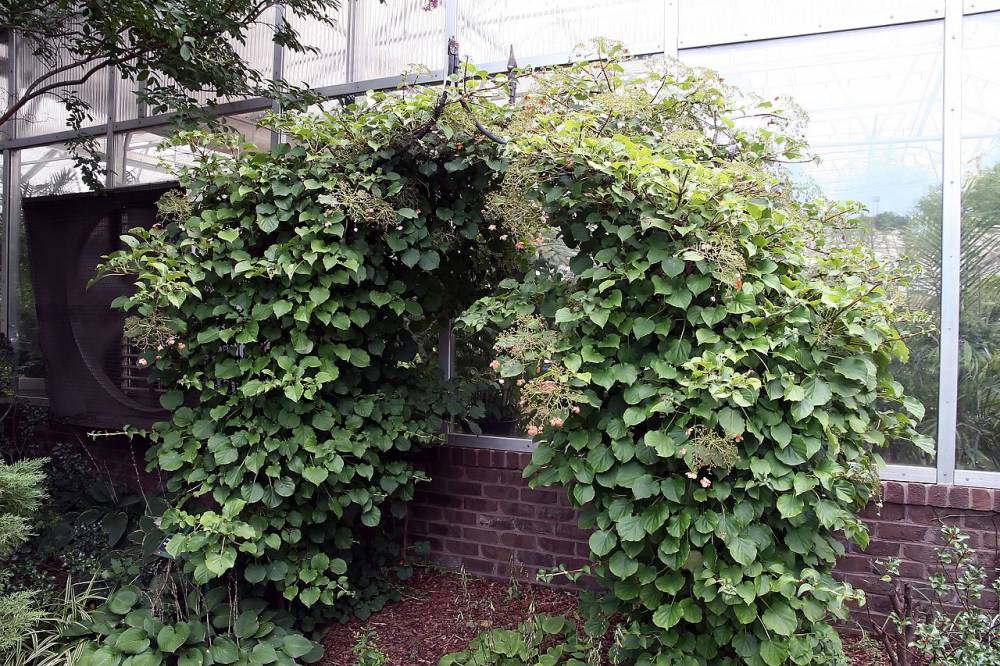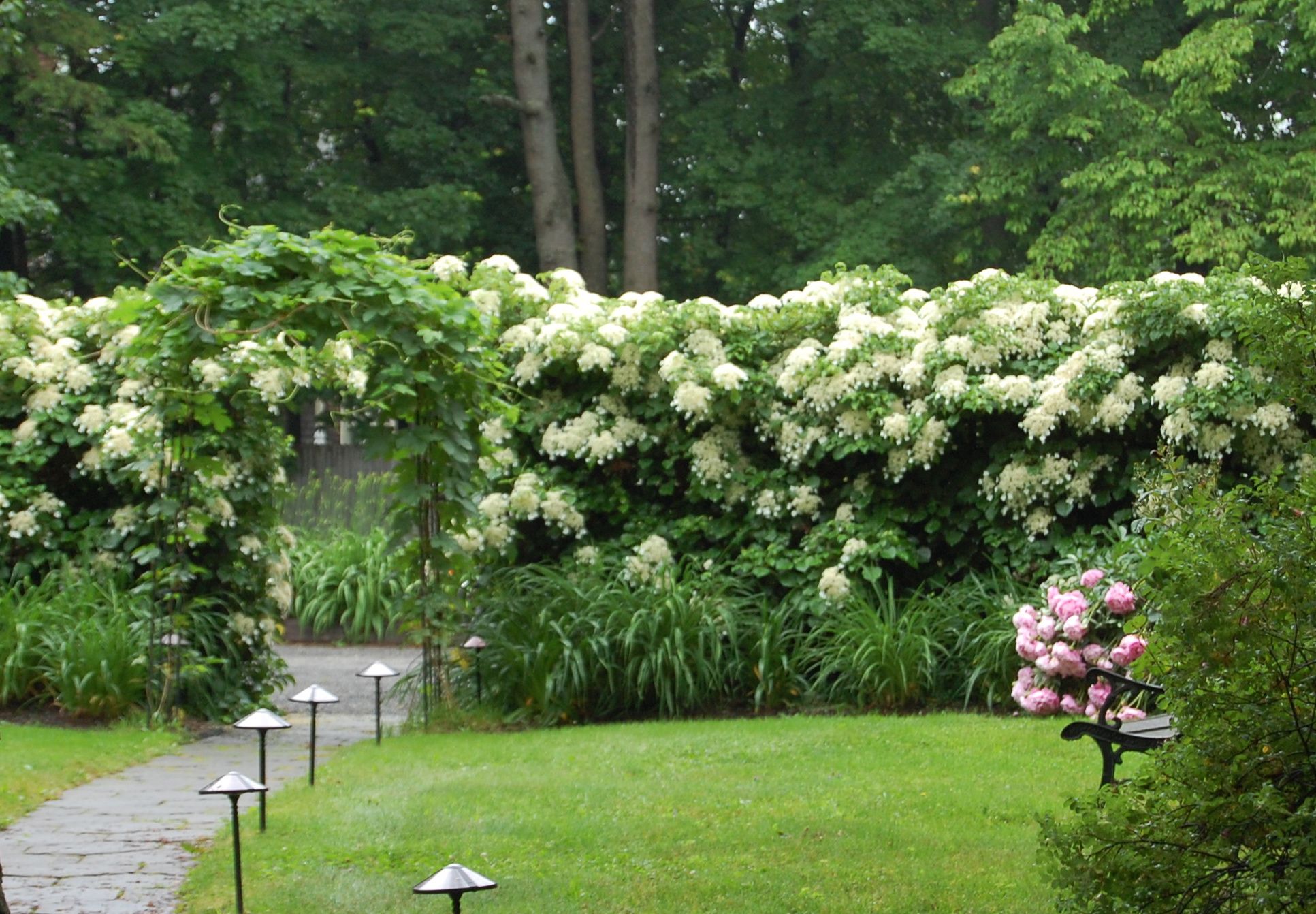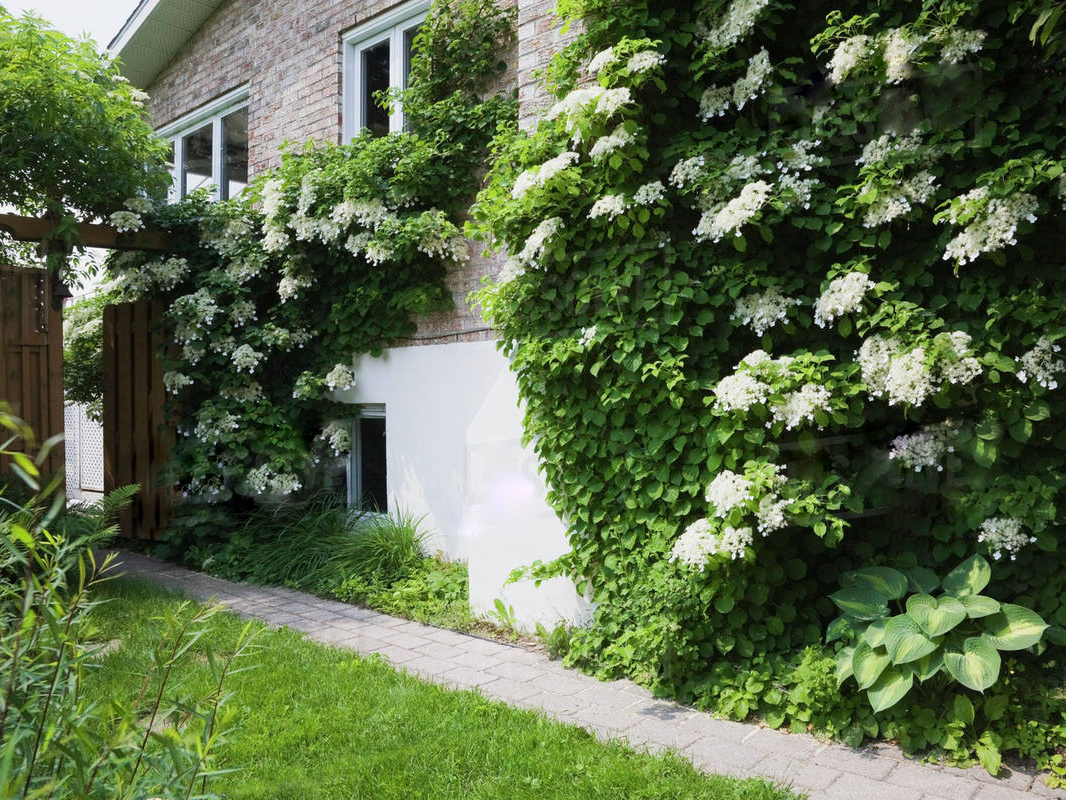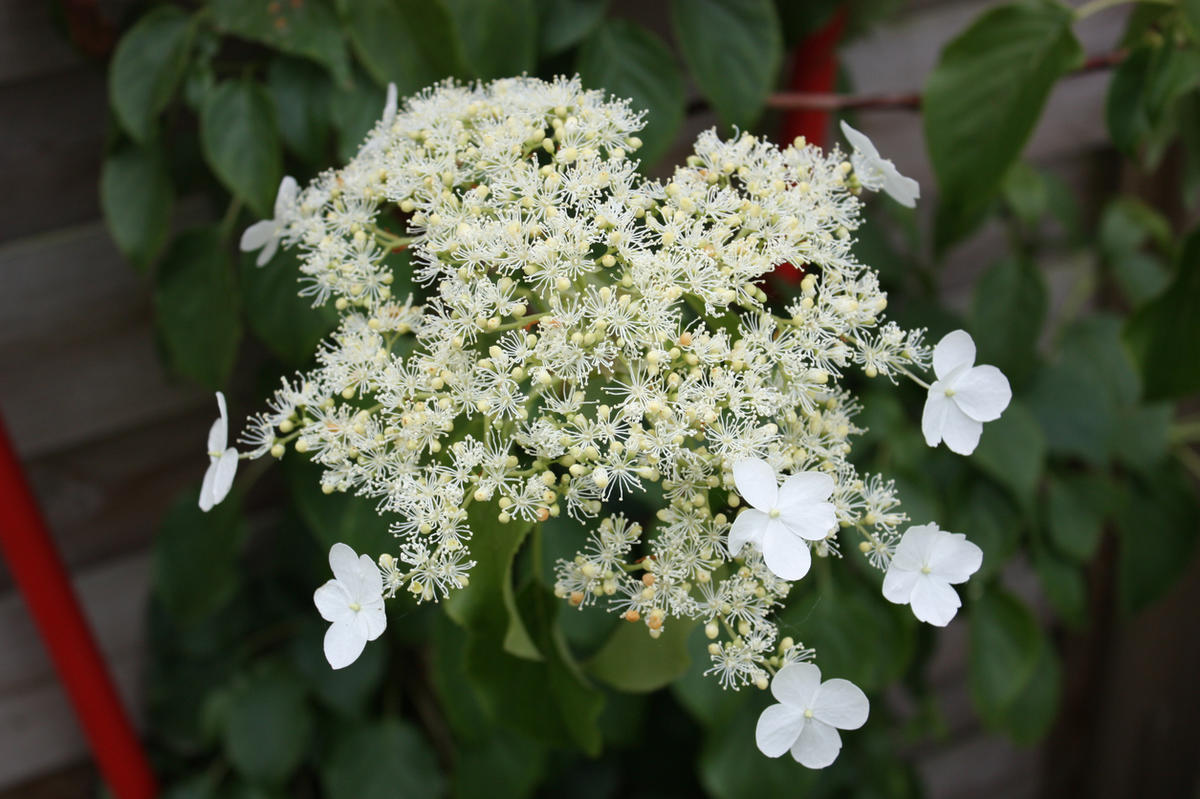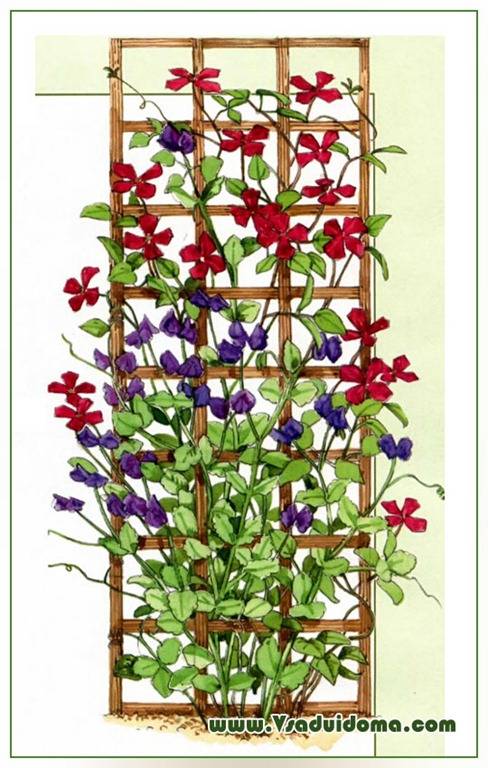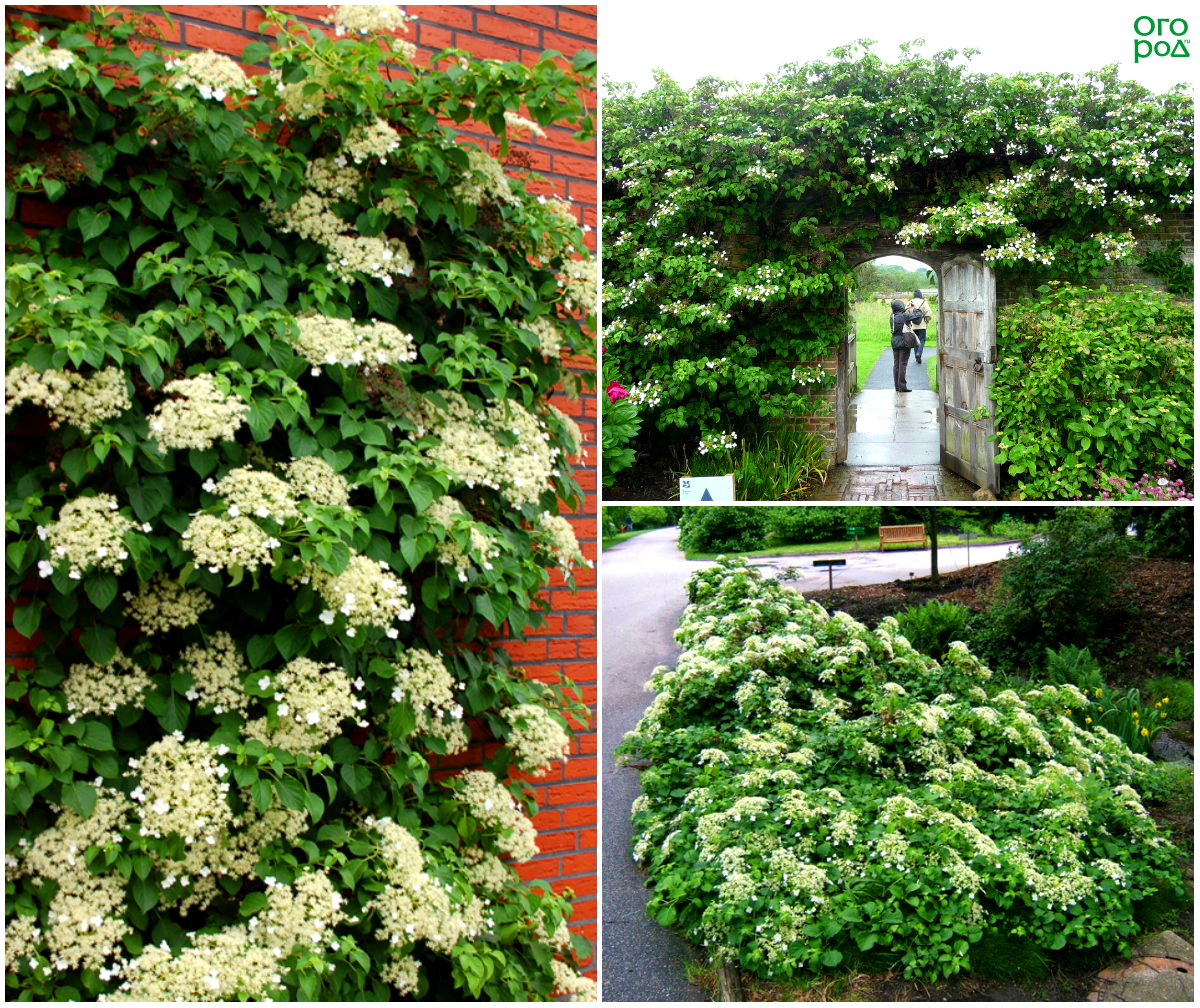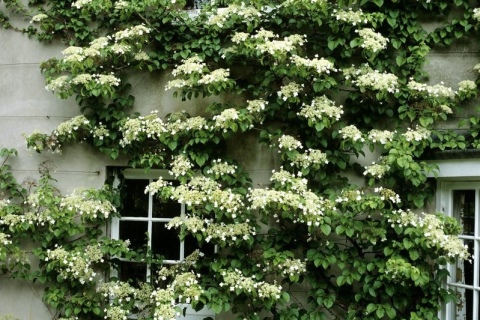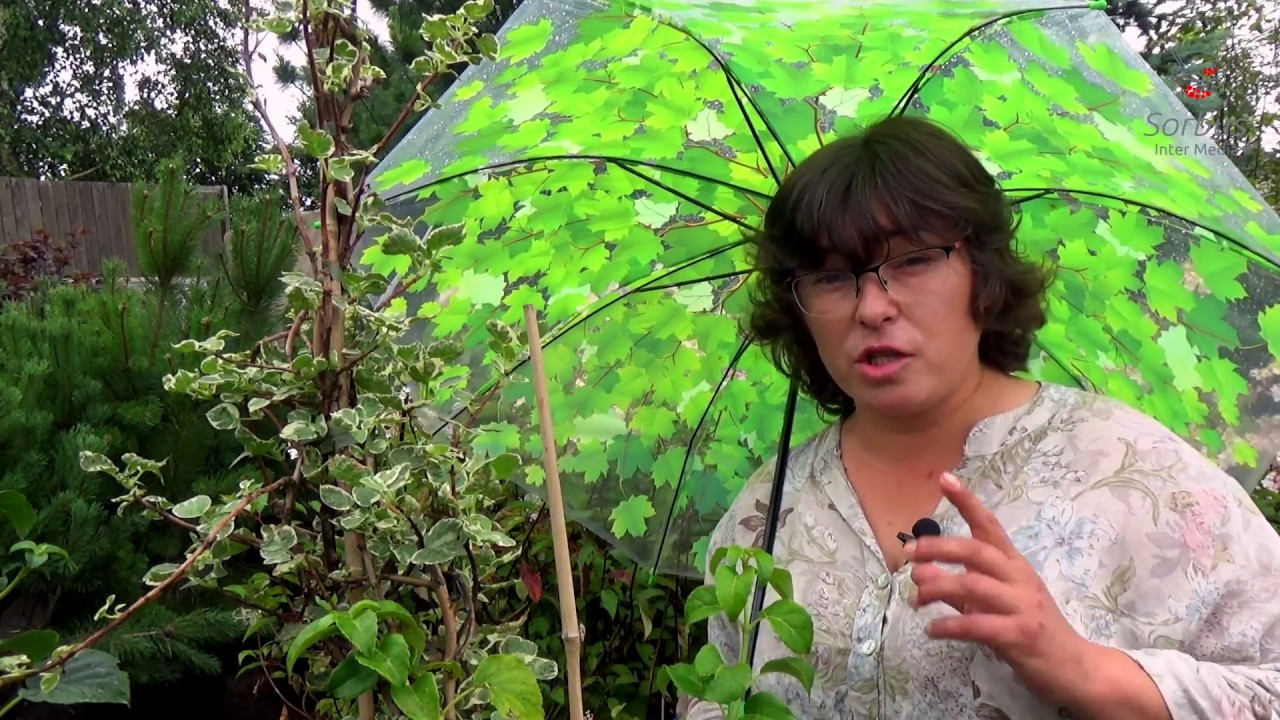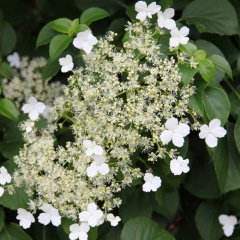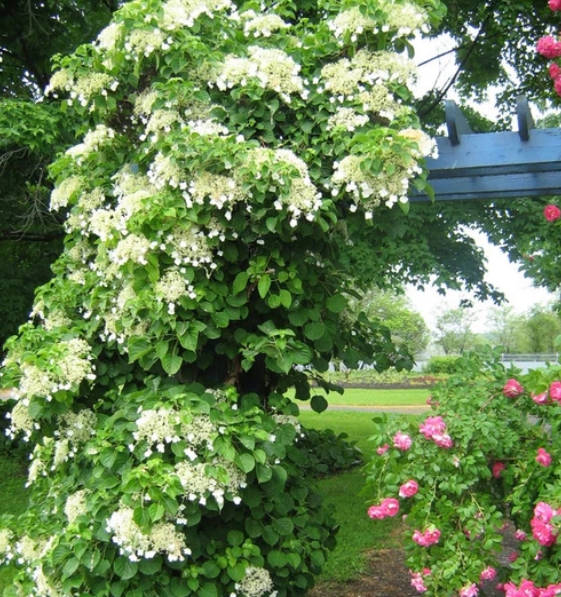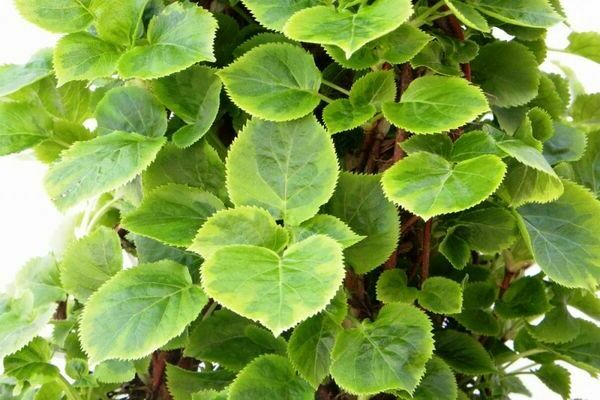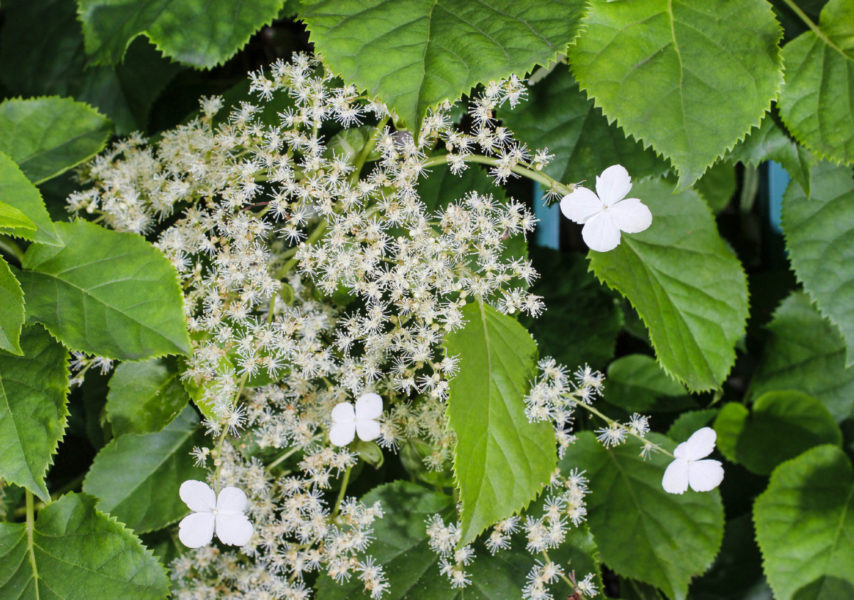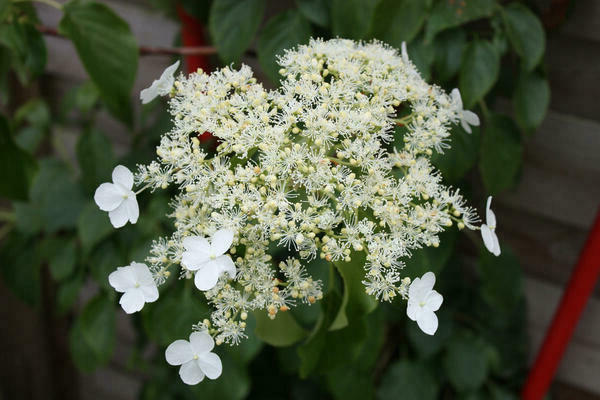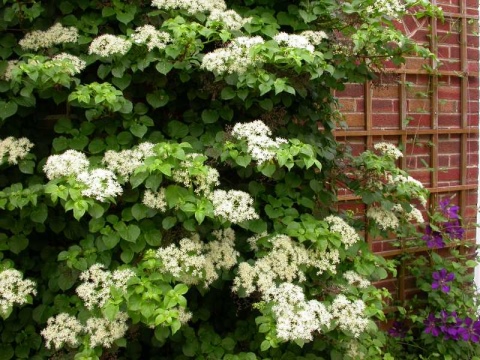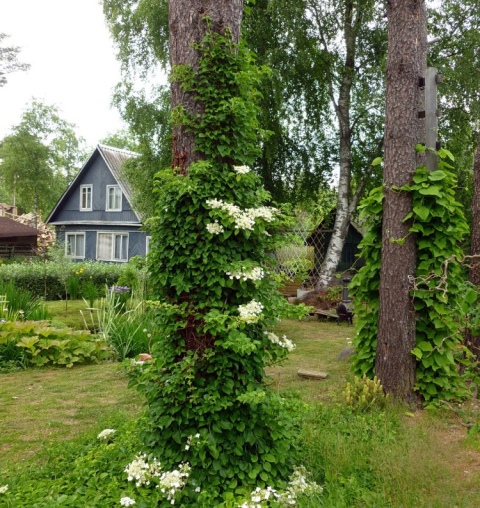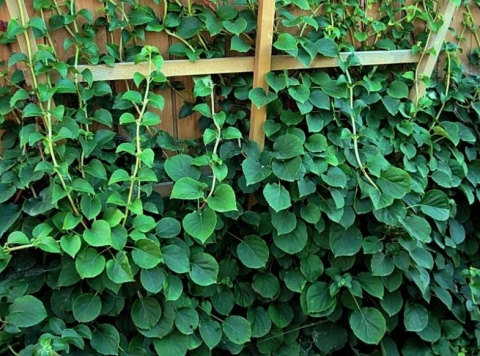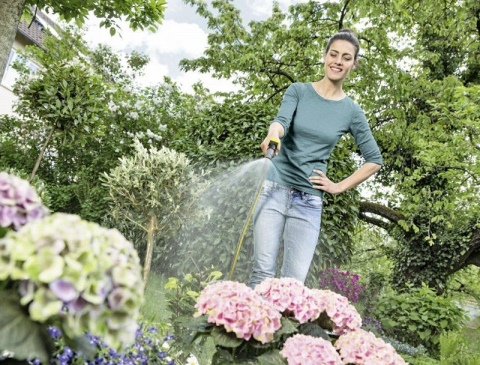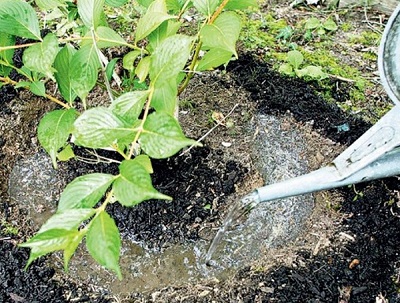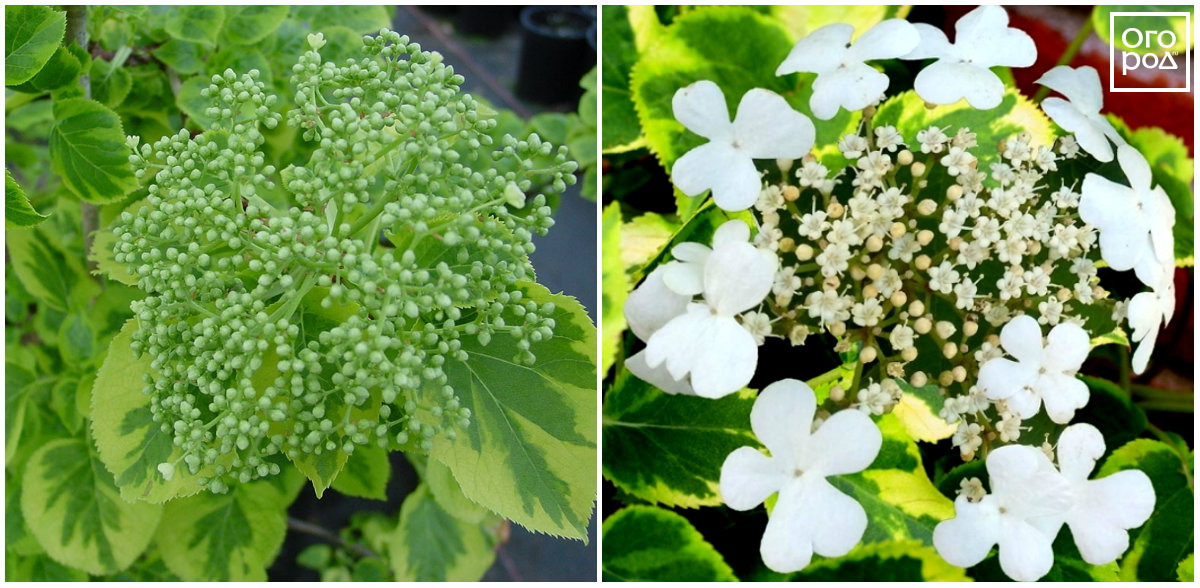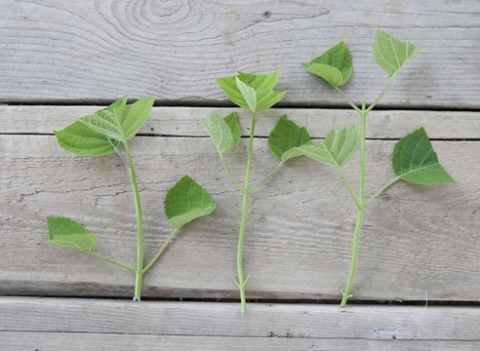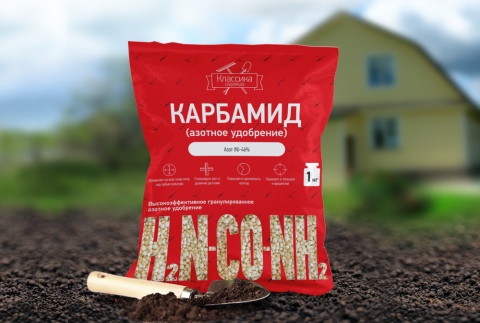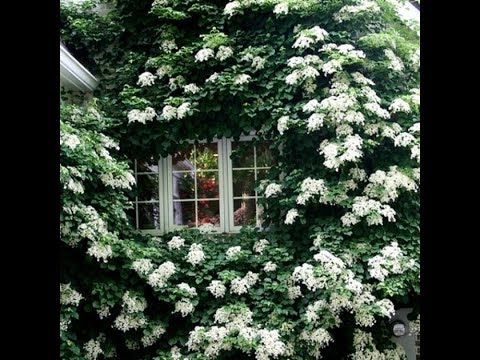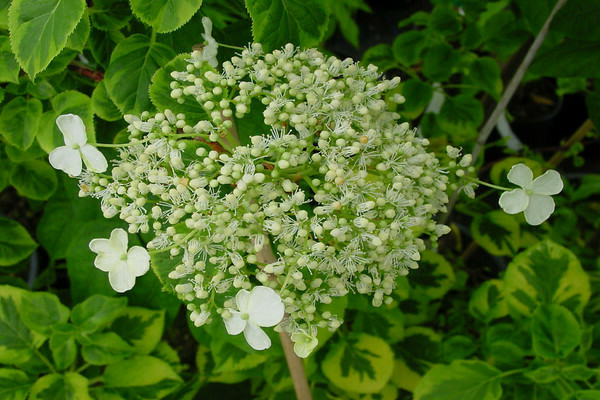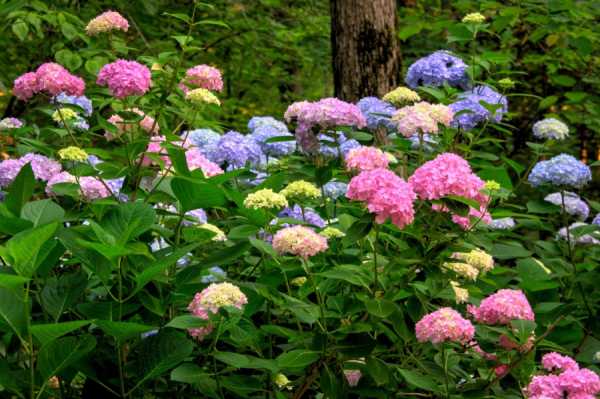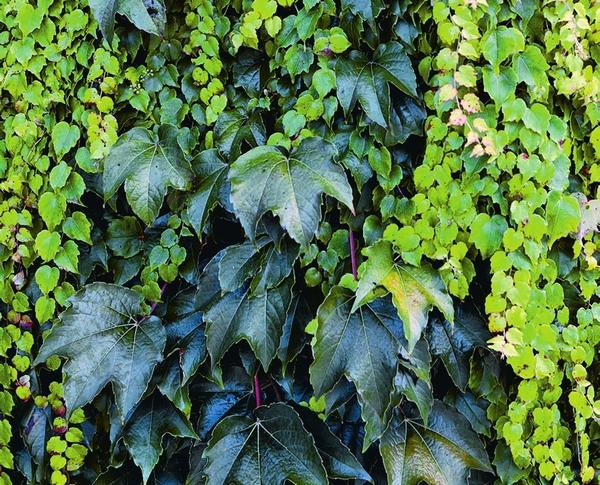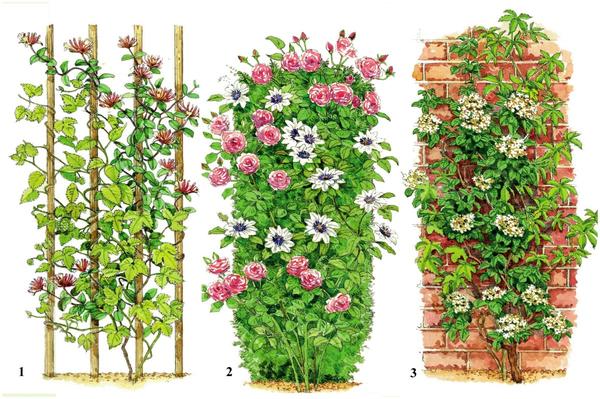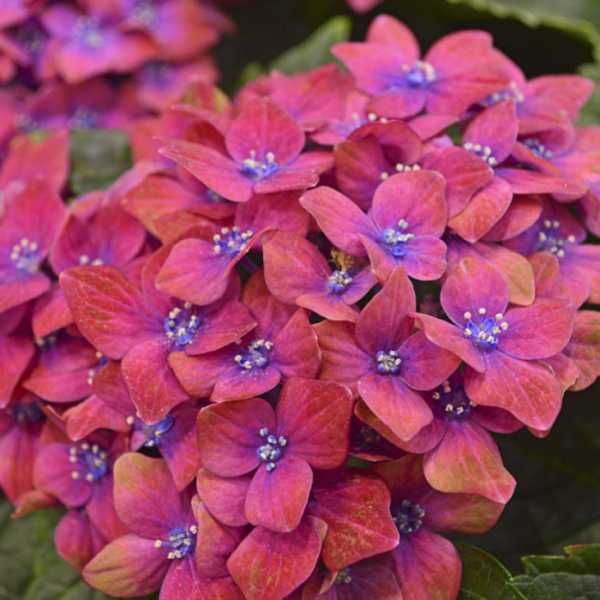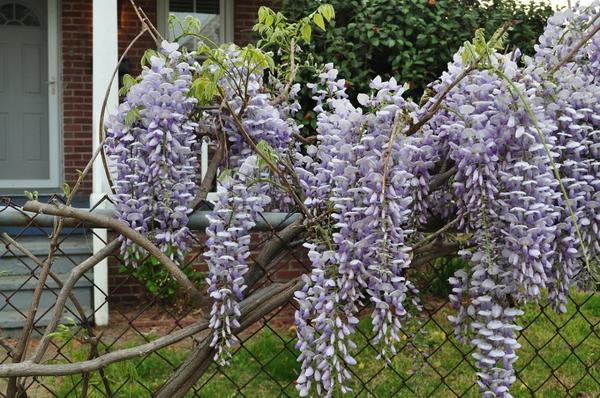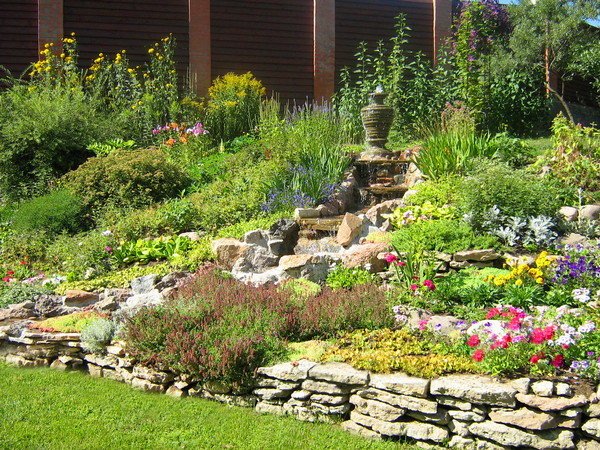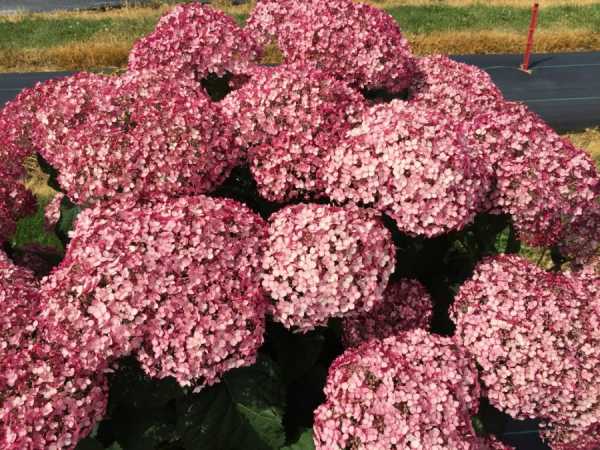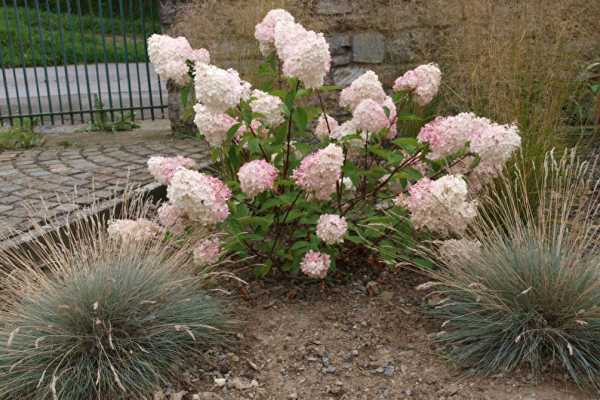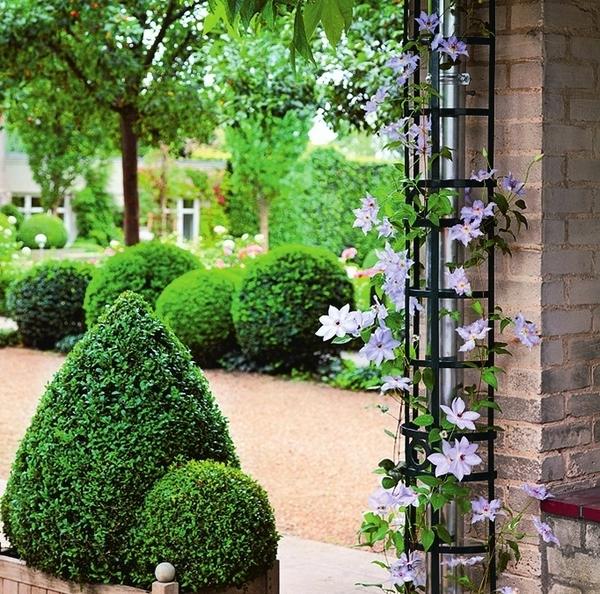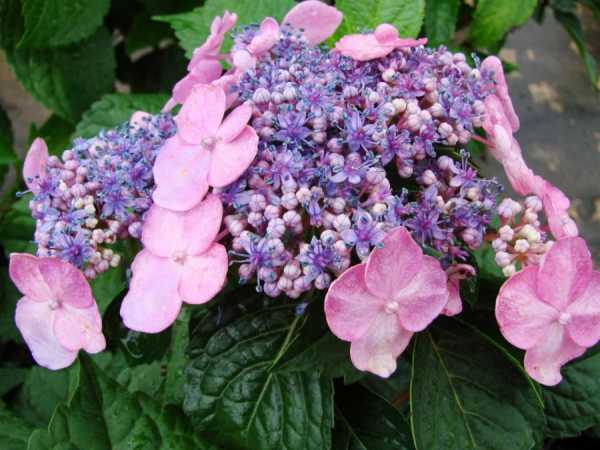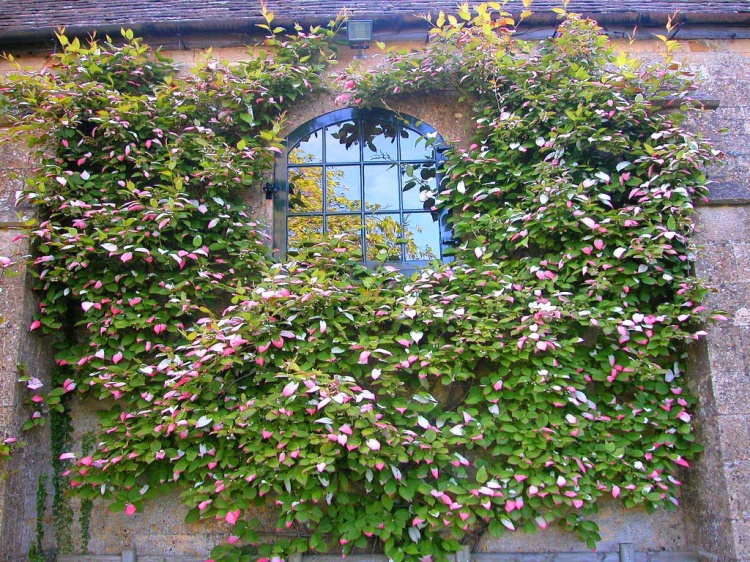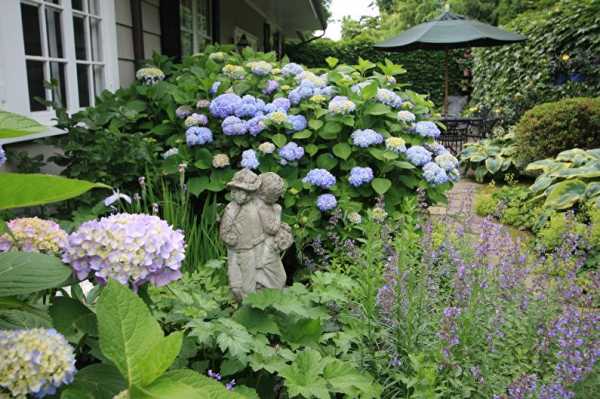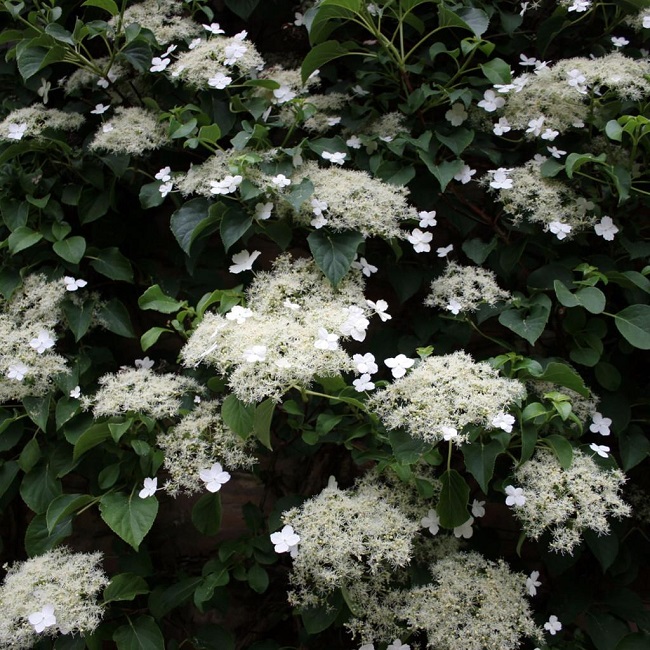Outdoor Hydrangea Care
Garden hydrangea care, pruning and wintering. Consultant LI Kalashnikova
Basic rules of care
It is not difficult to care for such a plant grown outdoors, but it must be done correctly. Proper watering is of great importance for the normal development of hydrangea. So, in hot weather it needs to be watered 2 times in 7 days, while 3-5 ten-liter buckets of lukewarm and always settled water should be poured onto 1 adult bush. In the event that there is mulch in the form of peat on the site, then watering can be reduced.
In order for the roots to receive more oxygen, it is necessary to loosen the soil surface around the plant several times a season to a depth of about 5 centimeters. You also need to promptly cut off those stems that have already faded.
Fertilizing hydrangea
In order to achieve the most abundant flowering, you need to feed such a flower at least 2 times a year. This must be done before the plant begins to bloom and after it has faded. At the very beginning of the spring period, a urea solution (2 g per 1 liter of water) is used to feed hydrangeas. In this case, 1 bush will need 30 liters of this solution. When the plant has faded, a complex mineral fertilizer should be used to feed it. During the summer period, experts advise using slurry as top dressing. However, do not overdo it, because overfed hydrangeas have very large inflorescences that can break rather fragile branches. To avoid this, you can tie up a bush.
Pruning hydrangea
Should be cut off those bushes that are older than 3-4 years. Species blooming on the stems of the current year should be cut off at the very beginning of the spring period, before the buds begin to open, as well as before the start of sap flow, otherwise the plant may drain out of juice, which will lead to its death. However, after pruning done very early, cuttings should not be rooted. In this regard, pruning should be done at a time when the buds begin to look alive and swell a little. The tree hydrangea is the very first to wake up, so it must be cut off first. Very long stems are cut off at a height of 3-4 buds. After that, the resulting twig can be divided into cuttings
Panicle hydrangea requires more careful pruning. So, last year's stems must be shortened by 1/3 part, however, viable cuttings are obtained from such segments.
Large-leaved hydrangea does not need to be heavily pruned. So, in spring, only every 4th stem is cut off, especially if it grows inside the bush. And also it is necessary to remove dried and damaged branches.
Pruning tree hydrangea in the fall. ...
Propagation of hydrangea by cuttings
Propagation of hydrangea by cuttings. Garden World website
After pruning the hydrangea, you will have a large number of stems that can be cut into cuttings. Each of the cuttings should have 2 nodes. In this case, the cut above the node located at the top should be straight, and under the one below it should be oblique. In this case, 2-3 centimeters should be retreated from the knot, and then a cut should be made. Fill the greenhouse container with a mixture of peat and sand and stick the stalk to a depth of 3 centimeters, while watering it well. After that, cover the greenhouse from above with a plastic wrap "house". The cuttings must be systematically moistened with a spray bottle so that the soil is always slightly moist. After complete rooting, the cuttings should be planted in open soil in a permanent place. They should have time to get stronger before winter.
When is it better to plant a hydrangea: spring or autumn?
Gardeners in the middle lane of our country believe that it is possible to plant seedlings in the spring (early May), this will allow the young bush to grow, get stronger and easily endure the coming winter. And in the fall (end of September), so that before the onset of frost, the seedlings have time to take root.
Preparing the soil for planting. At the end of April, we dig up the soil, with the addition of 1 sq. m. - on a bucket of peat, forest litter of coniferous species, humus, river sand, as well as organic fertilizers (1 tbsp. l potassium sulfate and superphosphate, "Agricola-7"). We close up all the fertilizers introduced into the soil with a rake and leave it until planting.
Before planting, we make a depression of 40-50 cm and plant young plants. In this case, we leave the root collar at ground level. Seedlings with a closed root system, with a lump of earth, take root better. Therefore, try to purchase seedlings in containers or pots.
After planting, water the soil around the bush abundantly and mulch with peat or sawdust, at least 5 cm thick, this will preserve moisture. Hydrangea likes moist, compostable or leafy acidic soil, and it also doesn't like drafts, so choose a location that's sheltered from the wind.
I have one huge bush that grows in the sun, its leaves in sunny weather strongly evaporate water, and when there is a lack of water, they begin to fade. I water 3 buckets (30 liters) of water twice a week. Moreover, the water should all go to the root. It is better to water with settled and heated water during the day.
During the growing season, garden care for hydrangeas consists of:
- in regular loosening of the soil around the bushes;
- weeding;
- mulching the soil;
- repeated feeding;
- correct watering;
- protection from diseases and pests;
- in preparation for winter, pruning and shelter.
Reproduction methods
Traditionally, hydrangeas are bred by cuttings, dividing and rooting cuttings, and petiole varieties are no exception.
Experienced gardeners prefer to propagate a climbing shrub by cuttings, the cutting procedure is carried out on summer days - for this, shoots are taken from the top of a plant with two internodes. To plant a twig, you need to remove the 2 lower leaves, and then soak it in a growth biostimulator. For hydrangeas, a substrate containing peat, humus and sand is suitable. The cuttings are placed in a nutrient mixture and covered with a film, after which they ventilate and moisten the soil for about a month.
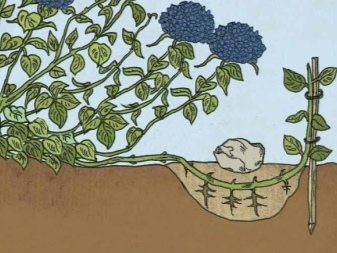
It is allowed to propagate the petiolate variety by dividing the root system. When transplanting hydrangeas, part of the root with shoots is separated from the shrub, the aerial part is cut off to 2 buds, roots that are too long are shortened and treated with a manganese solution. The seedlings can be planted immediately and provided with good watering for 30 days to speed up adaptation.

Seed propagation is also feasible, but does not guarantee a plant identical to the mother. The seeds are sown in small pots with soil mixture and drainage 2 cm thick. The seeds are not buried, but sprinkled with a thin layer of nutritious soil and covered with polyethylene. When seedlings appear, the film is removed and the soil is regularly moistened. The grown seedlings can be rooted next year.
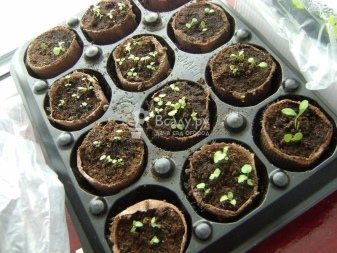
In decor and landscape
Combines the qualities of a liana and a woody plant. Possessing gorgeous inflorescences, it easily reaches for the sky, braiding everything that comes in its path.
The variegated form of hydrangea, in addition to volume, gives the objects an amazing lemon color. Decorating a balcony, gazebo, arches, and other tree-like plants with such vines will be especially effective. In order for the green canvas to grow faster, the climbing hydrangea must be cut off. This kind of hydrangea is also used to strengthen the slopes. The horizontal surface is able to be covered with this vine even faster. In this case, the climbing hydrangea can serve as a covering function for the soil.
Diseases and pests
Improper farming practices and violation of the rules of keeping leads to diseases and the attack of harmful insects.
Ailments that are common in culture.
Significant lightening of the foliage may indicate the presence of chlorosis. In this case, the leaves of the plant die, but at first they turn yellow, and only the veins retain their green color. By these signs, you can recognize the disease. The reason is the uncontrolled use of humus, an increased percentage of lime, which the culture does not tolerate, and a deficiency of iron in the soil. All that needs to be done is to feed the shrub, organize watering with acidified water, spray the plant with such products as Ferovit, Antichlorosis, Ferrilene or iron chelate.
If the petiole culture does not grow well, does not bloom and looks painful, there is reason to assume that it is affected by pests. The most dangerous species for the plant are leafy green aphids, gall nematodes and spider mites. In relation to them, acaricidal anti-mite agents and insecticides are effective - the systemic preparation "Tanrek", "Commander".
A prophylactic agent against viruses and fungus is spraying with Bordeaux mixture (in early spring and autumn), insecticides are applied to the soil before planting, and the seedlings are treated with copper sulfate
In addition, to prevent the appearance of pathogens, it is important to remove weeds and any plant residues in a timely manner.
Hydrangea care at home
Hydrangea grown in room culture is able to please the grower with abundant and long flowering, but only if optimal conditions for growth are created for it.
Lighting
Hydrangeas need a lot of free space, but they also need quite a lot of light. However, the bush should not be exposed to direct sunlight. For example, it can be placed at a distance of 2-3 meters from a south-facing window.
Temperature regime
The plant feels best at a temperature of about 20 degrees. At the same time, it must be protected from sudden changes in temperature and from drafts. When the shrub has faded, it will begin a dormant period. At this time, he is placed in a dark place where the air temperature is kept at the level of 7-10 degrees. The bush should be there until the buds begin to awaken in February. After that, it is returned to its usual place. This wintering allows hydrangeas to quickly regain their strength. If the bush hibernates under normal conditions, then it will bloom again only after 1 year.
Watering
When growing hydrangeas, special attention should be paid to watering it. It should be systematic and abundant, since this plant is very moisture-loving.
In the summer, the soil mixture in the pot is moistened abundantly and quite often, and in the spring and autumn, moderately. With a cool, dark wintering, the bush is watered only in order to prevent the earthen coma from completely drying out.
Water suitable for moistening the substrate should be filtered, well-settled or thawed. You can also use rainwater, but only if you live in an ecologically clean place. Do not forget to water the bush with water mixed with lemon juice 1 time in 30 days (5 drops of juice per 1 liter of water).
Air humidity
The plant needs high humidity. Therefore, a place is chosen for it, located away from working heating appliances, and it must also be systematically moistened from a spray bottle.
Top dressing
During the growing season, the hydrangea must be fed with a frequency of 1 time in 15 days. For this, mineral complexes for flowering plants (rhododendrons, heather and azaleas) are used. The first feeding is carried out in February, after young shoots appear on the bush. In winter, it is impossible to fertilize the substrate.
In order for the bush to be multi-colored in one pot, flower growers on one side of the container add a little lime to the soil mixture, which makes the inflorescences lilac or pink, and on the other - potassium-ammonium alum (4-5 alum per 1 liter of water) or iron salts, then the bracts will be colored in a bluish tint. At the same time, remember that in a neutral substrate, bracts grow creamy or white.
Pruning
Pruning homemade hydrangea is a must. A similar procedure is carried out twice a year. In autumn, all weakened stems are cut out at the root of a faded bush, while powerful shoots should be shortened by ½ part of their length. In spring, all elongated weak stems are cut out from the bush.
Hydrangea transplant
At home, a hydrangea can live no more than three or four years, after which a new bush will have to be planted. Moreover, she needs a regular transplant, which is carried out once a year.
The substrate must be saturated with nutrients. Its approximate composition: sand, turf and leafy soil (1: 3: 3). The container for planting should be taken large and wide, the fact is that the root system of this culture is horizontal.
In order for the hydrangea to experience minimal stress during transplantation, it is recommended to carry it out using the transshipment method. Also, when preparing the container, be sure to make a good drainage layer on its bottom. When the bush is transferred to a new pot, it is necessary to carefully fill all existing voids with new soil mixture. Make sure that after transplanting, the root collar of the bush is flush with the surface of the substrate.
The transplanted bush is watered, and when moisture is absorbed into the substrate, it is recommended to mulch its surface with peat. This will help to avoid excessively rapid evaporation of moisture from the soil mixture.
How to properly transplant indoor hydrangea. Hydrangea transplant at home.
3 Landing rules
Climbing hydrangea is planted in the ground in a permanent place only in April or May. The planting material must be at least 2-3 years old. The required distance of 1 meter must be observed between each bush.
The size of the hole in which the plant will be planted should be 40x40 cm. The depth is at least 0.5 m. If the soil on the site is heavy, then the size of the hole increases. If the soil is light, then the size can be slightly reduced. At the bottom, it is necessary to place a drainage from gravel or broken brick. The thickness of the drainage layer should not be less than 10 cm. Top up with 10-15 cm of fertile soil.
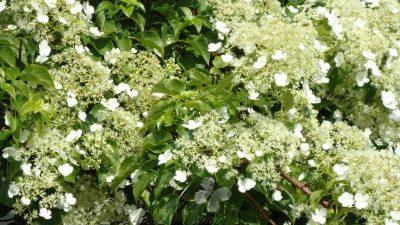
After this, the rhizomes of the future shrub are straightened, the root collar is located according to the soil level, after which the hole with the plant can be safely filled up. After the bush is planted, it must be well watered. With the help of sawdust, needles or peat, it will be necessary to mulch the existing trunk circle
The thing is that mulch helps to retain moisture, and also prevents weeds from clogging the plant and protects its root system as much as possible, which is important for a young seedling.
Description of petiolate hydrangea
The petiolate climbing hydrangea is very popular among gardeners. This flower is often used to decorate plots.
Origin
In nature, culture often grows in coniferous or deciduous forests. The flower can be found in Korea, Japan, Sakhalin. As a cultivated plant, it began to be grown in 1865 - since then it has become widespread.
The petiolate hydrangea looks very attractive and is actively used to decorate garden plots.
Peculiarities
The shrub is characterized by rather large dark green leaves. They have a sharp base. With the arrival of autumn, the foliage turns yellow, and in November it crumbles. Creeping hydrangea can take any shape, enveloping various objects.
Moreover, the plant does not have a branched trunk. This feature is often used by landscape designers.They often combine the plant with other flowers on the site. Hydrangea has dense leaves that can shade the windows of the house and protect them from the summer heat.
The flowers of the bush are white, pale pink or purple in color. They form thyroid inflorescences, which reach 20 cm in diameter. Flowering lasts more than 2 months. Moreover, it begins in mid-June.
Important! The plant has a pronounced aroma, therefore it attracts bees and is an excellent honey plant.
The plant may have beautiful white flowers
Advantages and disadvantages
The main advantages of climbing hydrangea include the following:
- excellent decorative properties;
- the possibility of using in landscape design;
- good winter hardiness.
At the same time, a significant drawback is characteristic of the flower. The plant is capable of reaching impressive sizes, therefore it must be tied to a support.
Winter hardiness
The culture is resistant to frost. At the same time, in a harsh climate, there is a risk of freezing of the shoots. Young plants grow very slowly. In the first few years, they spend energy on building up roots. Such bushes are less resistant to frost compared to adult plants.
From 5-6 years, hydrangea in the form of a liana gives impressive growth and is distinguished by abundant flowering. In the first 2 years after planting, it is recommended to lower the plant and completely cover it. At an older age, it is worth covering only the roots.
Hydrangea
This plant with oval bright green leaves and large spherical inflorescences about 15 cm in diameter is one of the most unpretentious representatives of its extensive family.
Among the most proven varieties of tree hydrangea are the following:
- Annabelle, a bush up to 150 cm high with leaves of rich green color, blooming from late May to October with large snow-white spherical inflorescences with a diameter of more than 20 cm. In autumn, Annabelle's inflorescences turn greenish. Hydrangea of this variety prefers acidic fertile soil, grows well in partial shade, does not require special conditions in winter.
- Grandiflora is a spreading shrub up to 2 m high with light green leaves, blooming profusely from June to September with light cream inflorescences about 20 cm in diameter.It is an unpretentious winter-hardy plant that takes root well in partial shade and in shaded areas and is often used in landscape design when creating decorative compositions.
- Sterilis is a tree-like hydrangea variety that is distinguished by its exuberant and long flowering from July to October. The color of large hemispherical inflorescences up to 25 cm in diameter (greenish-white at the beginning of flowering) gradually changes until it becomes snow-white.
New varieties of tree hydrangea are gaining more and more popularity, such as:
- Pink Bella Anna is a bush up to 120 cm high with large inflorescences of rich pink tones. The characteristic features of this hydrangea variety are quick adaptation to new conditions, abundant flowering before the first frost, no special requirements for care and soil composition, high frost resistance: Pink Bella Anna hydrangea does not need shelter even at temperatures below -30 ° C.
- White House blooms profusely with luxurious white inflorescences up to 25 cm in diameter from June to September. The bush of this plant usually grows up to 150 cm in height and has a spreading domed crown.
- Invincible Spirit is distinguished by beautiful inflorescences up to 20 cm in diameter, changing color from dark pink to bright pink during the flowering process. Hydrangea Invincible Spirit is unpretentious and frost-resistant, tolerates pruning of the shoots that have died in winter, quickly recovers, and successfully takes root in partial shade.


